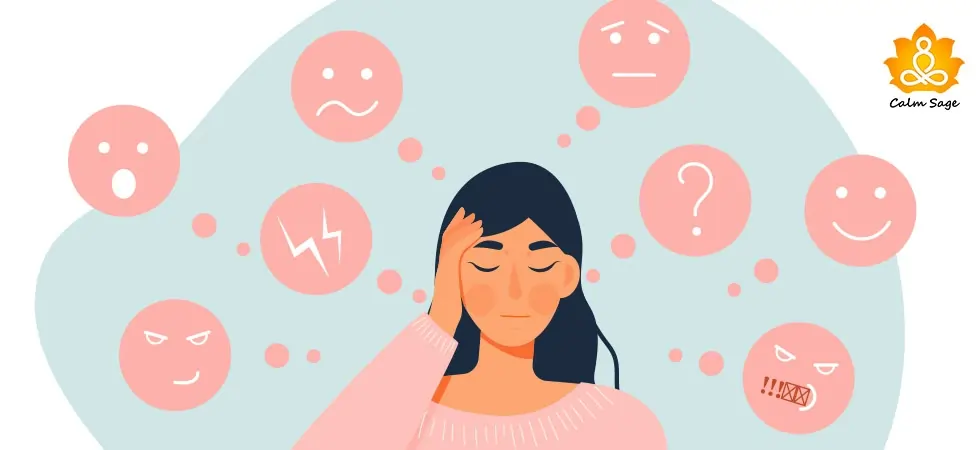Exploring Different Types Of Daydreaming With Examples!

Have you ever suddenly zoned out in the middle of the day to a dreamy land? Sometimes we are at a place physically but mentally we are completely at a different place. It used to happen to me in school a lot, most of the time I’d be somewhere else mentally.
This is called daydreaming. Your thoughts take you to a different world and you’re completely invested in your thought-provoked dreamy land. You can drift into a dream in complete wakefulness any time of the day.
Daydreaming is not a mental health condition but it can be a symptom of various severe mental health conditions. Therefore, it’s important to know what daydreaming is and what are the different types of daydreaming.
In this blog today, we are going to explore all the different types of daydreaming. Let’s get started…
What Is Daydreaming?

Daydreaming refers to a phenomenon where one travels to a dreamy landing through their thoughts in complete wakefulness. The dreamy land can be pleasant or undesirable but it is an imaginary world created by your thoughts and feelings.
Daydreaming might not be a mental health disorder but it does point towards some mental health conditions that need attention. Therefore, it’s important to keep track of your daydreaming episodes and what type of daydreaming you engage in.
Daydreaming has both a positive side as well as a negative side to it. Sometimes it acts as a quick pleasant getaway from the stressful life you’re leading. It becomes maladaptive when one starts daydreaming as a means to escape from reality.
Also read: Maladaptive Daydreaming: Meaning, Signs, Causes, & Treatment
Let’s understand daydreaming better by exploring the different types of daydreaming…
What Are The Different Types Of Daydreaming?

Jerome Singer (psychologist) from the United States of America was the one who explored daydreaming deeply and classified it into three different types. The Positive-Constructive Daydreaming, The Guilty-Dysphoric Daydreaming, and The Poor Attentional Control.
Let’s understand each of them in detail…
1. The Positive-Constructive Daydreaming
In this type of daydreaming, there is a very lighthearted imagination where your thoughts are more positively inclined and you are very wishful by all means. In fact, positive-constructive daydreaming builds the ground for creativity and out-of-the-box thinking.
This type of daydreaming shows the positive side of daydreaming where you allow yourself to take a break from your stressful life. Singer claims that positive-constructive daydreaming is really helpful in making better plans and setting better goals.
2. The Guilty-Dysphoric Daydreaming
In this type of daydreaming, negative and unpleasant emotions are in the power of your thoughts. The guilty-dysphoric daydreaming is governed by undesirable emotions like anger, fear, anxiety, guilt, shame, etc.
You have to be very careful about such types of daydreams because hostile and obsessive daydreaming can be a sign of neurosis. Even though neurosis is not a severe condition but if left untreated can grow into severe mental health conditions like depression, bipolar disorder, anxiety disorder, etc.
3. The Poor Attention Control
The other two types of daydreaming necessarily involve the act of daydreaming but with poor attention control, one doesn’t always drift into a wakeful dream. This type of daydreaming happens because of a lack of the ability to concentrate on one thing at a time or follow a trail of thoughts. Usually seen in conditions like attention-deficit hyperactivity disorder.
Other than these three types of daydreaming, Singer also identified a few more types of normal daydreaming that we all engage in time and again. These types do not really have a negative impact but when accompanied by a mental health condition can mean something.
4. Rumination: this type of daydreaming involves obsessively thinking or worrying about something. Your thoughts take you to an unpleasant scenario where your fears and worries are coming true.
5. Visualization: it is all about mental imagery. You imagine and visualize events that you want to happen. For example, you visualize winning a competition you’re really working hard for.
6. Escapism: this type of daydreaming is used as a coping mechanism especially when you’re stressed, tired, or frustrated. You drift into a scenario where you are relaxed and are living a stress-free life. You basically escape from reality for some time.
7. Fantasy: it basically refers to that type of daydreaming which involves dreaming about something that is highly unlikely to happen in real life. For example: romancing your favorite actor or having supernatural powers, being a part of the Avengers, etc.
Frequently Asked Questions
That’s All Folks!
I hope you found this blog about daydreaming and the different types of daydreaming helpful, interesting, and informative.
Do share this blog with your friends and family so that we understand what type of daydreaming we are engaged in and do we need professional attention or not.
Thanks for reading.
Take care and stay safe.




















